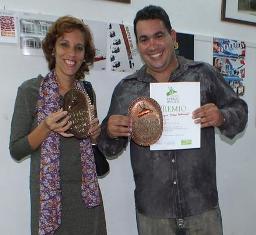That was an interesting interview since I went deep into the life of Marti, considered the most universal of all Cubans. I realized that Acanda is a sensitive man and I think he is a great journalist.
-You produced a serial on José Martí’s life in different countries. Many people called you “dreamer” for this project, since you wanted to tell his chronicles where the events took place. This project called “Tras las huellas de la historia” (Following the track of the history) has now become a reality. You have produced over 80 chapters. How many barriers you had to face to start your research on Jose Marti?
“There was a lack of understanding among people; they thought it was a Utopia. I take a look back and understand people had reasons to think that way. The project was carried out in the nineties, when the country passed through serious economic situations. Anyway, I was inspired by the study of José Martí’s life. As the time passed I felt more convinced of the need to reveal aspects of his life through texts, images and interviews.
– How different did you see those places like Haiti, Guatemala, Mexico, New York, Tampa, Key West in the United States compared with Marti’s writings?
“Martí’s descriptions of these places helped me a lot. Many places remain the same over hundred years later. Marti’s writings about the character of the people, the majesty of nature, the social and the economic situation of each place coincided with the reality at the present time.
– And what about Cuba?
“In the case of Cuba, something different happened. The images of Havana city and the citizens were created by Martí according to his thought, the contacts with the Cuban exiles in the United States, and all above, the study of thinkers and great fighters such as Gomez and Antonio Maceo. His descriptions of our country were marked by his first experiences in Cuba when he was very young and what he found on his journeys throughout the world. This way, he discovered the greatness of the Cuban soul.”
-Talking about the need for the media to present the story on Jose Marti in a closer manner that provides knowledge and provokes wanderlust for knowing more information, did you intend creating a precedent in the way of narrating your story by using the audiovisual?
“I’d rather not think about that. These materials are carried out with great dedication and love and responsibility. We tried to conceive the audiovisual materials in a way that people felt motivated by the story. We want people to know Martí as a human being with strengths and weaknesses.
“I disagree with the idea of representing the figure of maestro Martí by acting. I think, it makes no sense to represent this figure with a disguise and as if he was walking along the streets. In my opinion, that type of performance is not effective from the artistic point of view and not accepted by most of the people. “


